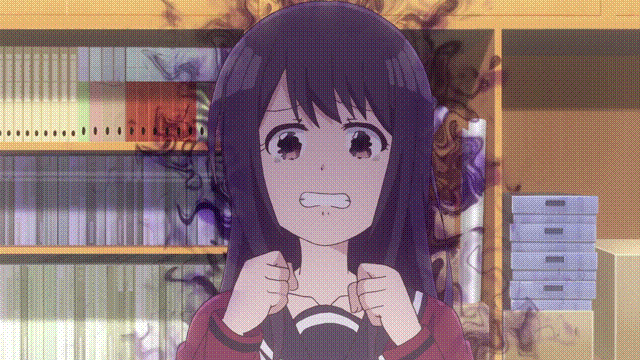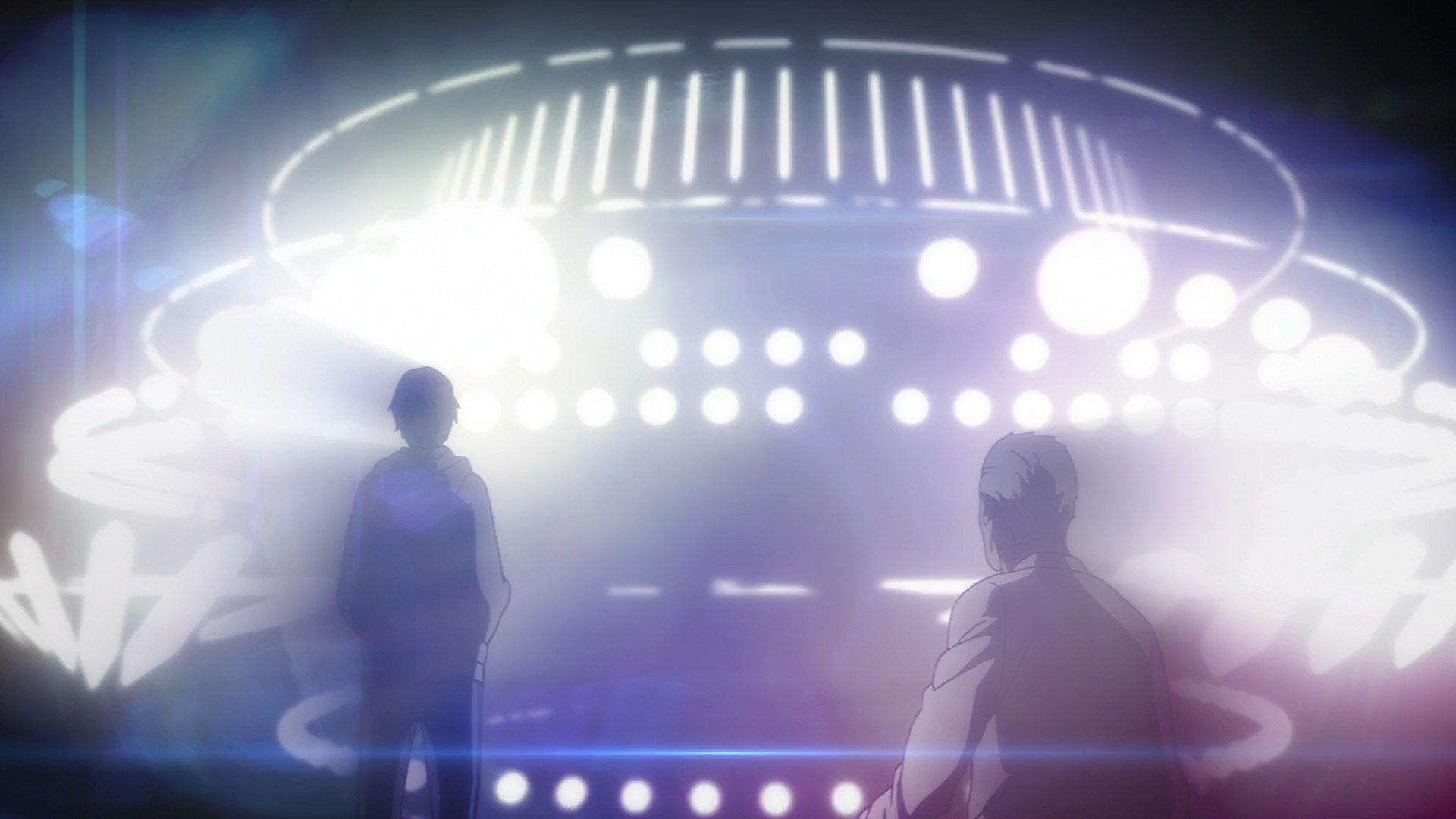
Senryu Girl, episode 10. Poor Nanako.

Senryu Girl, episode 10. Poor Nanako.

As Inuyashiki’s antagonist was busy massacring an entire police precinct, midway through the show’s eighth episode, I realized why the series had been giving me an incredible sense of déjà vu. The arc of events was basically indistinguishable from a player’s boredom-induced wanton murder streak in Grand Theft Auto. On a lark, the killer offs a couple of random bystanders. When the cops get involved, they find themselves no match for the killer’s walking munitions depot. Maybe a couple of cheat codes get deployed. Hundreds of nameless, faceless extras die in the carnage. It’s less a story than a fill-in-the-blank exercise: “Unstoppable, remorseless murderer claims ______ lives in latest spree,” with the numbers going up exponentially each time until the killer loses interest and quits.
To reach these tedious depths, Inuyashiki has to thoroughly squander an actually intriguing premise. The title character, a late-fifties salaryman who goes unappreciated by everyone in his life except his pet dog, is out for an evening walk when an errant alien spaceship crashes nearby, killing him. As a mea culpa, the E.T.s build Mr. Inuyashiki a new, cosmetically identical mechanical body before hurriedly going on their merry way. It turns out that the new skin has a couple more features than the old one, like flight, bullet-proofing, and an autonomous missile defense system. Mr. Inuyashiki, a kind soul at heart, quickly sets out to use his newfound powers for good. The catch? Someone else also got upgraded in the accident, and contrary to his name “Hiro,” this one is a nihilistic teenager who cares little for innocent lives.
It all seems like the perfect setup for a titanic clash of wills, underpinned by some rumination on what it means to be human. A bit of a cliché, sure, but Mr. Inuyashiki is in a refreshingly different stage of life from the typical inadvertent superhero, or even anime protagonist. And Hiro, his foil, takes his sociopathic mantle in a chilling ten-minute sequence where he breaks into a Tokyo family’s home and methodically disposes of its members one by one. He is so unbothered by what he’s doing that he can casually ask one of his terrified victims who her favorite One Piece character is, seconds before killing her.
Before long, however, the script loses interest in developing either hero or villain. Inuyashiki’s middle section is little more than a river of blood, as the plot gives Hiro progressively flimsier reasons to escalate his rampage until all of Japan lies in his sights. (Like Grand Theft Auto, though, the show ultimately pulls its punches when children are the ones in danger.) Mr. Inuyashiki himself, meanwhile, gets essentially written out of his own series, leaving us to wonder what the hell he’s doing while Hiro’s genocidal acts blanket the news. The two don’t get around to sparring until the penultimate episode, just in time for a deus ex machina conclusion that renders moot what little advancement we see in either character.
The animation, while not nearly as bad as the plot, can’t fully decide what it wants to be. Early episodes use 3D heavily for Hiro and Mr. Inuyashiki’s machine forms, a nice hint that they’re a little different from everyone else, but this doesn’t remain totally consistent through the rest of the series, and the models don’t have the detail they need to hold up in high action scenes. The 2D work on some of the side characters, too, is sketchy enough that I found myself wondering what they were intended to look like. But how much would improving the visuals really have helped? After all, if video game graphics suffer from diminishing returns, it’s hard to see how Inuyashiki, with all of its resemblance to a mediocre gaming stream, would benefit that much more.
So one day I was sitting around, thinking that Monogatari Series seems to have one of the most useless main characters, well, ever. In terms of making his friends’ lives better, at least, even if he is a premier source of banter and horrifying losses of bodily integrity. In fact, Araragi seems to be the source of his friends’ troubles more often than not.
Well, what better way to test this hypothesis than with numbers? We’ll give Araragi one point for every arc where the solution wouldn’t have happened without him, and take one away in each case where the problem et cetera as above. I’ll go in anime order.
| Hitagi Crab | +1 | |||
|---|---|---|---|---|
| Araragi introduces Senjougahara to Oshino. Let’s give him some credit. | ||||
| Mayoi Snail | +1 | |||
| None of the arc would happen without Araragi skulking around the park trying to avoid his family, and Hachikuji finally gets home and stops being so angry. Yes, Araragi isn’t very helpful when it comes to actually finding the place, but let’s not nitpick. | ||||
| Suruga Monkey | –1 | |||
| Not only would there be no problem in the first place but for Araragi, but his new girlfriend also has to save him from literal disembowelment. | ||||
| Nadeko Snake | +1 | |||
| You could loosely argue that Nadeko’s infatuation with Araragi is an indirect cause of the conflict, but it’s not essential. | ||||
| Tsubasa Cat | –1 | |||
| See Suruga Monkey, above, except replace “new girlfriend” with “new vampire shadow familiar.” | ||||
| Karen Bee | ||||
| Araragi doesn’t do much here. | ||||
| Tsukihi Phoenix | ||||
| Or here! | ||||
| Tsubasa Family | +1 | |||
| Eh, well, Araragi kind of solves the problem with his sword fuckery. | ||||
| Tsubasa Tiger | –1 | +1 | ||
| Jealousy again, but at least Araragi shuts this one down hard. | ||||
| Mayoi Jiangshi | –1 | +1 | ||
| Fucks up the world, then unfucks it. | ||||
| Nadeko Medusa | –1 | |||
| Definitely number one on the list of Araragi fuckups. | ||||
| Shinobu Time | –1 | |||
| Araragi’s basically the sole reason Hachikuji sticks around for so long, and he refuses to let her pass on until the very end. Big minus. | ||||
| Hitagi End | ||||
| This arc is just the tail end of Nadeko Medusa. Though it’s tempting, it’s not really fair to penalize Araragi for the same thing twice. | ||||
| Suruga Devil | ||||
| No, Araragi’s little pep talk in the middle doesn’t count as essential. | ||||
| Yotsugi Doll | –1 | |||
| I barely even remember what happens in this arc, but I do know it’s Araragi’s fault. | ||||
| Ougi Formula | ||||
| I guess Araragi could have spoken up, but why put that responsibility solely on him? | ||||
| Sodachi Riddle | –1 | |||
| You were supposed to notice sad Oikura in the corner! | ||||
| Sodachi Lost | ||||
| Araragi doesn’t solve the problem. Really, nothing gets solved. This is a pretty tragic, difficult arc. | ||||
| Shinobu Mail | –1 | +1 | ||
| Jealousy yet again! Araragi really knows how to step on some toes, but at least he’s learning how to fix things. | ||||
| Koyomi Vamp | +1 | |||
| This arc is a pretty clear victory for Araragi. Well, if you ignore Hanekawa getting kidnapped, which he solves, so let’s call that part a wash. | ||||
| Total | –9 | +8 | = | –1 |
Hm. Uh… well, guess I was right.
Video games have more than their share of, let’s say, unrealistically well-endowed female characters. The common refrain invoked in defense of these character designs is that the depictions of men as tall, trim, and muscled are no closer to the truth. Usually, the counterargument then proceeds to how the physical traits given to male characters are reasonable in most settings, while those given to females are have no such justification and can only be explained by sexual objectification, and so on.
I’d like to present Keijo!!!!!!!! as a different sort of rebuttal. It takes the “T&A is just the feminine version of buff” line of thought to its logical conclusion, by putting on shounen calling-your-attacks fights that exclusively use those breasts and buttocks. In this world, a woman can launch an opponent dozens of meters in the air with just her butt and the right training. This is, however, clearly not the case in reality. It follows that the aforementioned depictions of men and women are not unrealistic in the same way, at least not in the world we as the viewers live in.
So, yeah, QED or whatever.
CHIYODA, Tokyo, Japan — Employment opportunities for anime voice actors with native-sounding English continued to hover near zero in the month of October, according to figures released Friday by the Ministry of Internal Affairs and Communications. Jobs numbers remained stubbornly low in spite of government initiatives targeted at the hiring of competent English speakers, including the addition of characters who “basically screamed for someone with better English than a potato,” according to an anonymous source inside the Ministry of Economy, Trade, and Industry.
In one prominent failure, the role of Kouki Saiki, a Japanese returnee from an English-speaking country in this season’s WWW.Working!!, ended up going to voice actor Yoshimasa Hosoya, whose English has a distinctly Japanese flavor. “For this to happen when Saiki’s native language was explicitly changed to English, from the Web manga’s original Korean, is nothing short of a complete repudiation of the program. It’s as if no one in the industry cares,” said Kenzou Takamiya, professor of labor studies at Tokyo University.
The Statistics Bureau expects the hiring of VAs who don’t need a katakana reference for English text to remain low in the coming months, especially given the now-likely demise of the multilateral Trans-Pacific Partnership trade agreement, or TPP. Provisions in the TPP would have lowered barriers to work visas for Japanese Americans seeking voice roles in anime, but the election of the staunchly anti-trade Donald Trump as president of the United States has effectively closed the possibility of the deal’s ratification.
Reaction from English-speaking anime fans has been muted, with some expressing disbelief that voice actors’ Japanglish was ever a concern. “I don’t think I’ve ever noticed,” said 33-year-old Kent Wentworth of Toledo, Ohio. “I mean, it all sounds like Japanese to me. I’m too busy reading the subtitles to really pay attention to their voices anyway.”